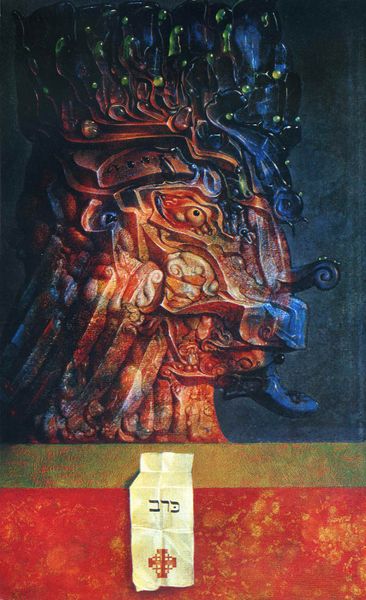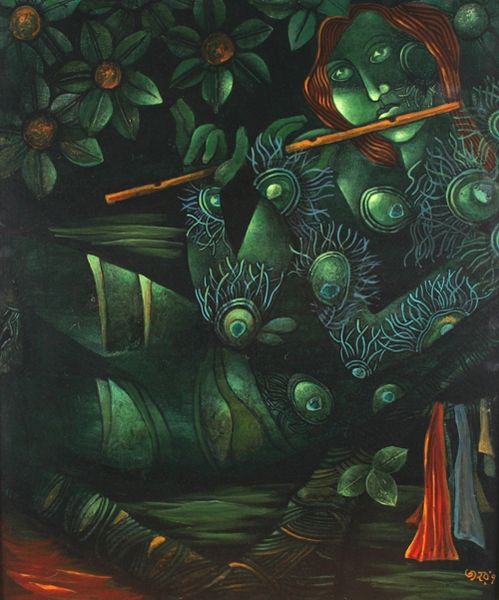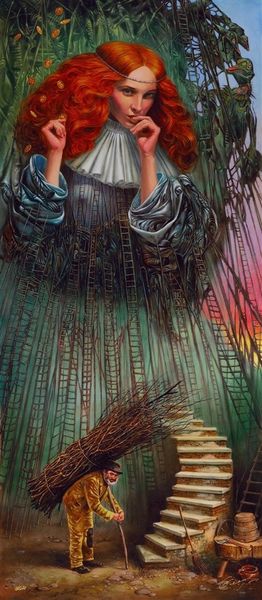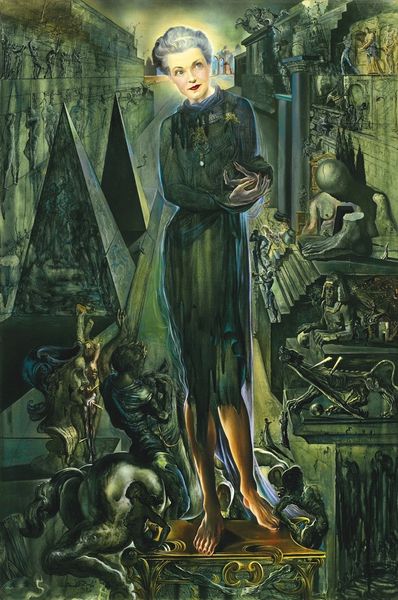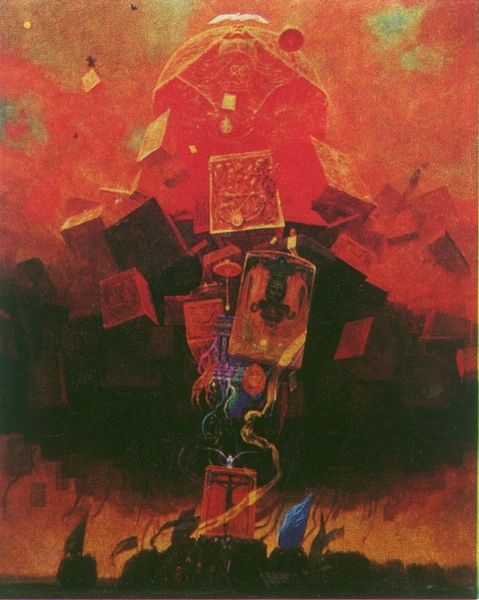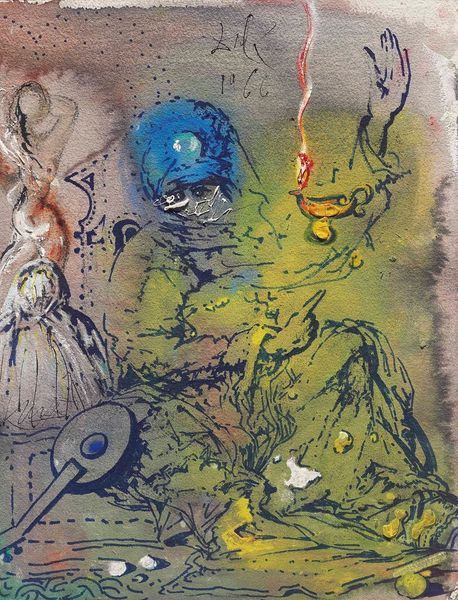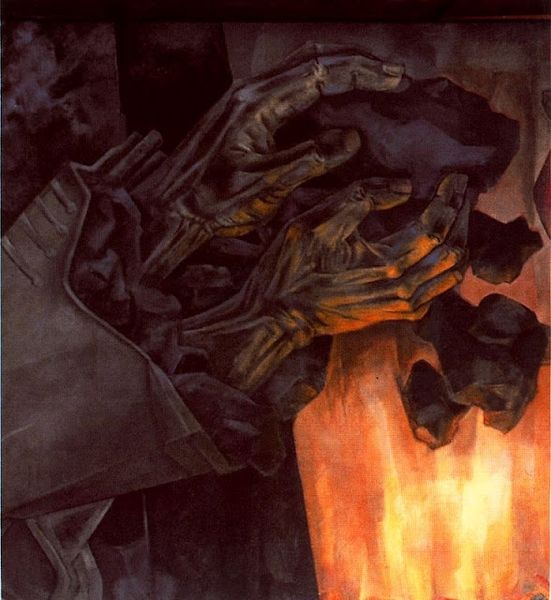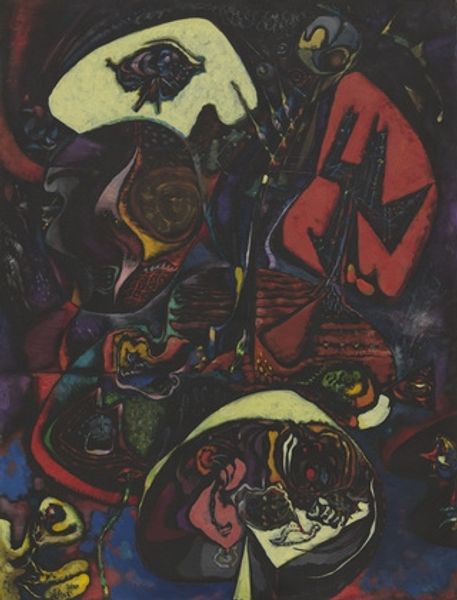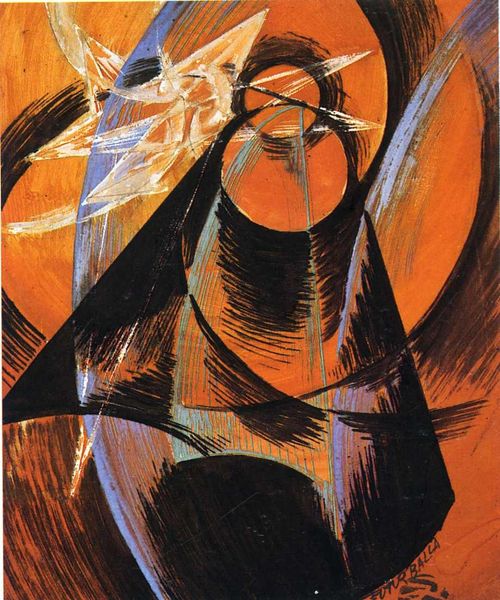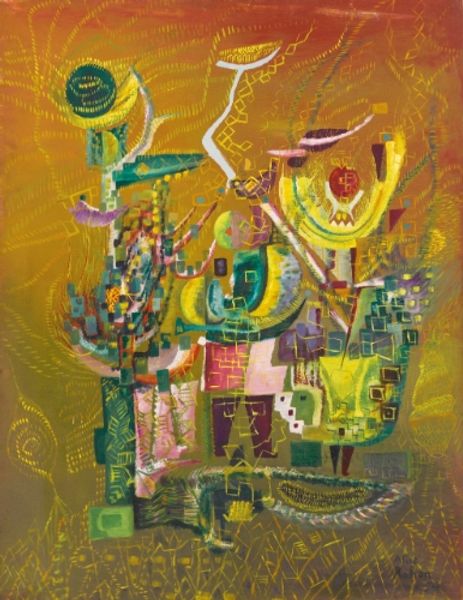
painting, oil-paint
#
portrait
#
abstract painting
#
painting
#
oil-paint
#
landscape
#
figuration
#
geometric
#
modernism
#
futurism
Dimensions: 150 x 225 cm
Copyright: Public domain
Curator: Standing before us is Umberto Boccioni's 1912 oil painting, "Materia," currently held in a private collection. Editor: My initial feeling? Total fragmentation! It's like the painting exploded and then someone tried to piece it back together, but only sort of succeeded. I'm immediately drawn to the vibrant, almost chaotic energy, though. Curator: Indeed. Boccioni, a leading figure in the Futurist movement, was deeply invested in representing dynamism and the sensory experience of the modern world. Look closely at the brushwork – the way the colors and forms fracture. He sought to capture not just the appearance of things, but also their movement and the sensations they evoke. Consider, too, the influence of industrialization on early 20th-century aesthetics and production: Boccioni embraces its pace and transformative potential. Editor: It’s a bold choice to portray something so…static, like a portrait, in such a frenetic way. I get a sense of overwhelming sensory overload. Almost claustrophobic despite all that supposed movement. The materiality is amazing; the thickness of the oil and the pointillist touches remind me of pre-war anxieties. It feels like it's wrestling with itself. Curator: The materiality underscores this tension. He built up the paint, layer upon layer. Note how geometric shapes, though fractured, still impose their forms throughout the portrait: squares, triangles... This is about dissecting and analyzing what "makes" something exist: What are the geometric, material, social relations implicit? This ties into broader futurist and even Cubist approaches to breaking from representational traditions. Editor: Right! So it's a portrait grappling with what portraiture, and representation in general, even *mean* anymore? A lot of other Italian Futurist pieces tend to glorify machinery. This instead gets more at the human, internal impact of all of this modern progress, as both hopeful and a little terrifying. It makes it so incredibly vibrant still today! Curator: Precisely. It represents both a breakthrough and an interrogation. Analyzing it from this perspective enables deeper consideration of social dynamics. Editor: Okay, now that’s an explosion worth staring at. Thanks for bringing to light the material tension with tradition. I think I’ll carry the internal explosion away with me.
Comments
No comments
Be the first to comment and join the conversation on the ultimate creative platform.


